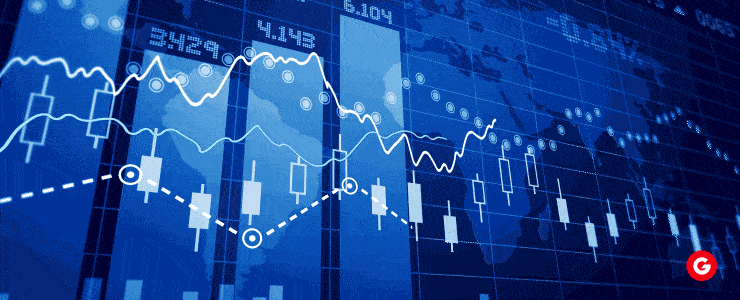An increasingly common method to invest in the financial markets is online trading and the forex market. Every trader needs to understand the concept of leverage regarding their trading strategies.
Being the strong weapon it is, leverage can be used carefully and carelessly. So it’s crucial to understand when and how much pressure to apply. This article will explain leverage and discuss its role in online trading. It will also provide tips on how traders can effectively use leverage in their trades – read on!
Definition of Leverage In Online Trading
The forex market has become increasingly popular in recent years, thanks to the ease and convenience online trading offers. One of the key concepts you will see going around in online trading circles is ‘leverage.’ Simply put, leverage enables traders to hold positions larger than their original investment would permit. This has the potential for both good and bad.
Leverage is a tool used by online dealers to boost their purchasing power. Using this tool, they can trade larger volumes of currency or CFDs (Contracts for Difference.) All with a relatively small amount of capital. However, traders must have certain funds in their accounts to use leverage. The term “margin requirements” refers to this and is frequently stated as a percentage of the total size of the position. However, leveraging also increases risk because losses are magnified along with profits.
In the forex market, for example, traders can use leverage ratios of up to 30:1 or even higher depending on the broker’s offering. Online brokers typically offer different levels of leverage.
Advantages of Leverage
- Using leverage, traders can take charge of a larger position than their available capital permits. In other words, it amplifies a trade’s potential gains or losses.
- CFD trading and the forex market are two examples where leverage can be particularly useful. Trading CFDs enables investors to speculate on how their prices will change without actually owning the fundamental assets. This means traders can benefit from leverage by controlling a larger position with only a fraction of the total value required to trade.
- In forex trading, leverage enables traders to access significant amounts of currency with relatively little capital investment.
- Another advantage of using leverage is that it enables traders to diversify their portfolios more easily.
Although leverage can be beneficial, it also comes with several disadvantages. As a trader, you should know the potential disadvantages before engaging in leveraged trades.
Disadvantages of Leverage
- The main drawback of leverage is the high risk involved. When using leverage, even small market movements can result in substantial losses as traders are exposed to amplified risks.
- Leverage can magnify gains and losses; therefore, traders should always use it within a sensible limit to avoid the risks of losing more than their initial investment.
- Novice traders who still need to become proficient in managing risk may lose significantly more than anticipated.
- The concept of leverage requires significant capital commitment. Brokers often require traders to deposit a certain amount as a margin (recall margin requirements) when using leverage for trades.

How to Calculate Leverage
You must consider your margin needs, which are established by your broker when calculating leverage. The amount of money you must have in your account to start and keep a trading position open is known as a margin requirement. The amount of margin requirement needed will vary depending on how much you are trading and exactly what commodity you are trading.
After determining your margin requirement, you can determine your leverage by dividing your overall position value by your available margin. Your leverage, for instance, would be 10:1 ($10,000/$1,000) if you had $1,000 in your trading account and wanted to start a position worth $10,000 with a 1% margin requirement.
Source – https://www.wallstreetmojo.com/financial-leverage-formula/
Types of Leverage Strategies
Several types of leverage strategies are used in online trading, each with its own benefits and risks:
CFD trading
CFD trading is a leveraged strategy that allows traders to speculate on price movements without owning the underlying asset. CFDs allow traders to take advantage of margin trading, meaning that they only need to put up a fraction of the value of the trade as collateral. This magnifies both profits and losses, making it important for traders to manage their risk effectively.
Trading forex
Another popular leveraged strategy in online trading is in forex trading. Forex trading is a leveraged strategy that allows traders to magnify their returns by borrowing funds from brokers. This means that traders can control larger positions with smaller investments.
Futures trading
In futures trading, contracts are bought or sold that compel traders to buy or sell an underlying commodity at a set price and time. Futures trading enables investors to leverage their holdings and profit from market price changes.
Managing Risk with Leverage
One way to manage risks in forex trading is by setting up stop-loss orders. Stop-loss orders limit the number of losses a trader can incur on a given trade by automatically closing out positions at predetermined levels. Additionally, successful forex traders know that it’s essential to have a solid understanding of technical and fundamental analysis.
Lastly, traders need to be disciplined when using leverage in forex trading. It’s important not to let emotions drive decision-making processes, as this could lead to irrational decisions and significant losses. By following these tips and strategies, traders can effectively use leverage in forex trading and maximize their potential returns while mitigating possible risks in online trading.
Now that you know about leverage and how to use it effectively, it’s time we set you up on an awesome platform.

Enter The FXGiants Trading Platform
FXGiants is a robust and reliable trading platform that caters to the needs of both novice and experienced traders. Like the MetaTrader 4 trading platform, FXGiants is an ideal choice for online trading. This is all thanks to its user-friendly interface, advanced charting tools, and fast execution speeds. With FXGiants, you can trade multiple asset classes such as forex, metals, stocks, indices, futures, shares, and spreads.
If you are already familiar with the mt4 trading platform or Metatrader 4, transitioning to FXGiants would be smooth. Both platforms offer similar features, such as automated trading through expert advisors (EAs), customizable indicators, and templates for technical analysis.
However, what sets FXGiants apart from other platforms is its emphasis on providing many features to traders. Features like –
- Effortless onboarding
- Quick deposits
- Instant and safe withdrawals
- 6 account types offering low to zero commission rates
- Excellent bonuses and more!
Conclusion
Leverage is a powerful tool that must be used responsibly. Don’t use leverage simply because it is available. Use it only when it makes sense based on your trading strategy and risk management plan. If the market moves against you, your losses can quickly exceed your initial investment. That’s why managing your risk and using leverage responsibly is crucial.
Always ensure you understand the market and the risks involved before using leverage in your trades. The robust and dependable trading platform FXGiants meets the requirements of both beginning and seasoned traders. FXGiants is a great option for online dealing and is similar to the MetaTrader 4 trading platform if you want an easy transition.
DISCLAIMER: This information is not considered investment advice or an investment recommendation, but is instead a marketing communication
